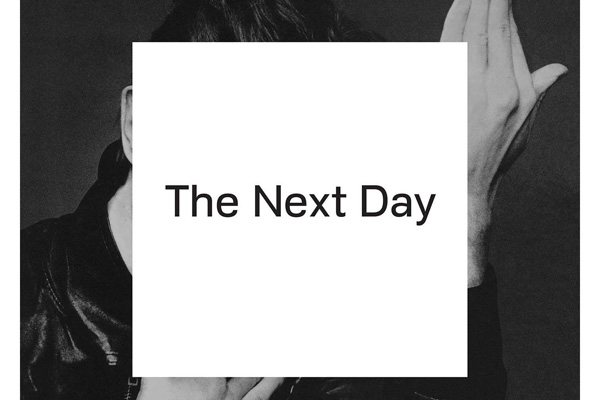Heartened by but skeptical of the torrent of five-star reviews The Next Day garnered prior to release, I got my hands on a physical copy and stared at it long and hard. The artwork, a minimalist defacing of the cover of Bowie’s classic album Heroes, offered no clue as to its contents. With no idea what was in store for me, I took a deep breath, put the CD in my computer and hit “play.”
The Next Day kicks off with a species of song well-known to Bowie fans: a dance tune you couldn’t possibly dance to. Despite being propelled by a thumping four-on-the-floor beat, opener “The Next Day” is dense with detuned guitars and pitch-black lyrics; try as you might, you simply cannot boogie along to Bowie growling “here I am, not quite dying, my body left to rot in a hollow tree.” This is not the sound of an old man masquerading as a young one, fleeing from the notions of age and mortality. The song, like the rest of the album, is rife with the stench of death.
The first third of The Next Day is drenched in the same grey melancholia as the opening song, from the sleazy and King Crimson-esque “Dirty Boys” to the slow-motion ballad “Where Are We Now?” before culminating in the irresistible and heart-rending album highlight “Valentine’s Day.” Only when the frenzied “If You Can See Me” comes hurtling through the speakers does The Next Day get a sudden jolt of adrenaline, snapping out of its morose stupor. The subsequent few songs are wide-eyed and vigorous; suddenly, Bowie doesn’t sound aged and pensive, but well and truly young again. He even references this uncanny youthfulness on the psychedelic anthem “I’d Rather Be High,” chuckling that he’s “17 and (his) looks can prove it.” Ziggy, it’s been a while.
After this headrush Bowie guides The Next Day back down to earth for a masterful, flawless third act, as solid as any four-song suite in his discography. Beginning with the glorious “How Does The Grass Grow?” Bowie descends back into the dark introspection in which the album began. “You Feel So Lonely You Could Die” is a suitably melodramatic penultimate song, Bowie declaring he “can see you as a corpse hanging from a beam” over an epic backdrop of strings and a choir. The song ends with a sly nod to Ziggy opener “Five Years,” concluding with the drum pattern with which the song begins.
But no song on The Next Day, or any Bowie album for that matter, is as bleak or as harrowing as closing track “Heat.” Dealing with lyrical themes such as prison, the apocalypse and his hatred for his father, this cavernous hymn feels less like the work of the Thin White Duke than Michael Gira of Swans, and would have fit comfortably on their last album The Seer (coincidentally, Bowie declares himself “a seer and a liar” towards the song’s end).
By the time The Next Day fades from your speakers, you are left feeling like you’ve just stepped off of a rollercoaster. I entered the album praying it would be satisfactory, and instead got a musical and emotional tour de force as grand as any Bowie album to date. Simply put, The Next Day is a masterpiece, a testament to Bowie’s undying creativity and a fitting swansong to his four-decade career.
Rating: 5/5




